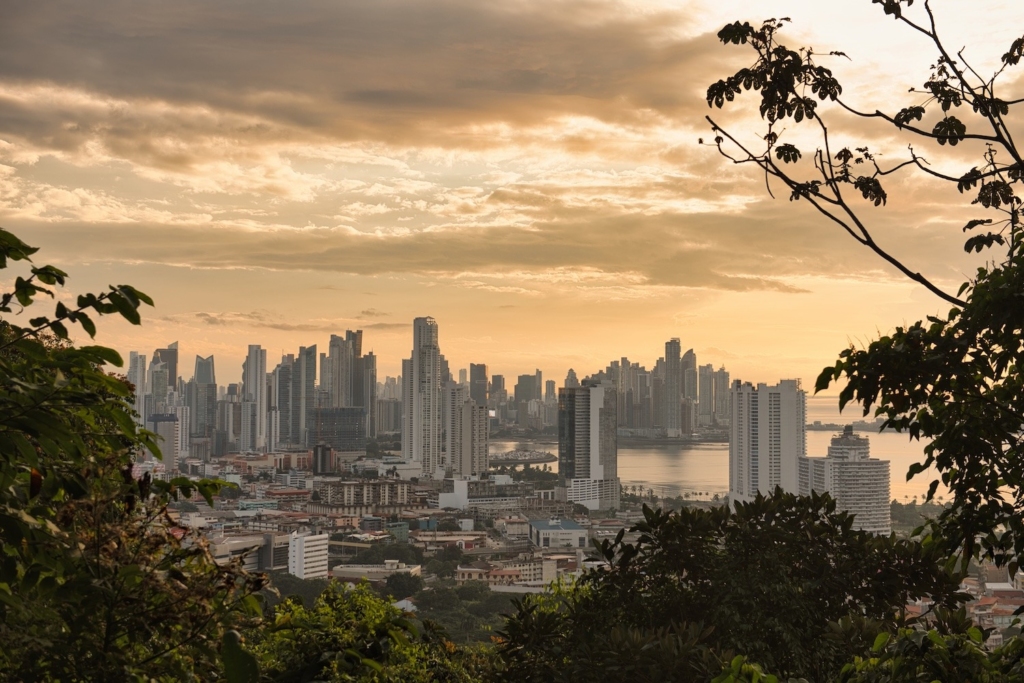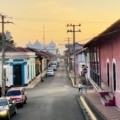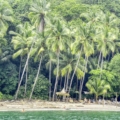I always loved “Panama” by Van Halen and what better song to play when approaching Panama City on a rainy late August morning? While we were singing along, rocking around the cockpit, I realized that the song was not at all about the country or city but a car. Why did that never occur to me? Well, in my mind it will always remain a hymn to this great country. Sorry, Mr. David Lee Roth.
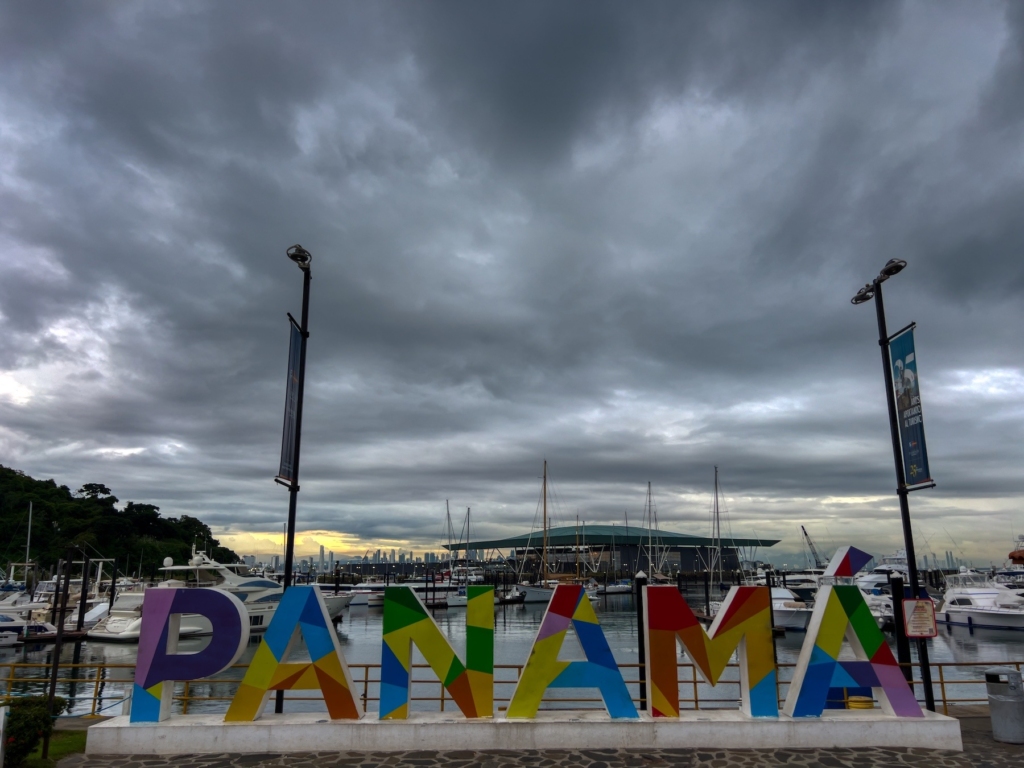

Flamenco Marina with cruise ship terminal
Flamenco Island
Flamenco Marina turned into our base camp for the next two months while we started the repair process on Fortitude X after our lightning strike in Costa Rica. It can never hurt to have friends in high places, and with the help of our local connections, we managed to find recommended surveyors and experienced marine trades to help us throughout the process. The first few weeks were occupied with research and communication; the daily conversations between claim adjusters, boat part suppliers, and local mechanics of various expertise, mostly electricians challenged our language skills – and our patience. Torsten did a superb job relating and explaining issues and keeping everybody in the loop. We learned a lot throughout the process, and as unfortunate as this entire incident had been, it forced us to turn the boat upside down, minimize cables, replace damaged equipment, and streamline systems.


Cockpit chaos
“Kabelsalat”
I would lie if I say it was all fun but we did it – and we had a lot of entertainment along the way. Using the efficient, yet not always punctual public transportation system was an excellent and very cost-effective way to get around in Panama City. One can’t miss to visit the Miraflores Visitor Centre so you can appreciate the history behind this engineering marvel. Watching the freighters going through the canal made me realize that in a couple of weeks, it will be us going through the locks framed by a giant ocean vessel, two monstrous walls on either side, and a more than 2-meter-thick gate of concrete and steel. My heart started racing with excitement and anticipation; another milestone in our journey on Fortitude X.
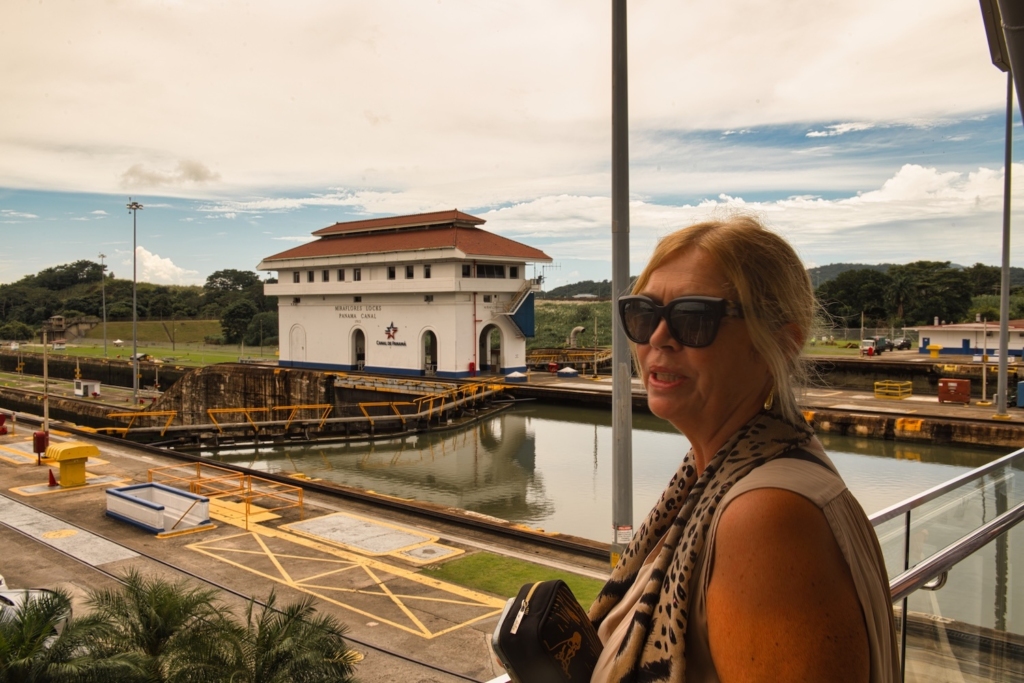
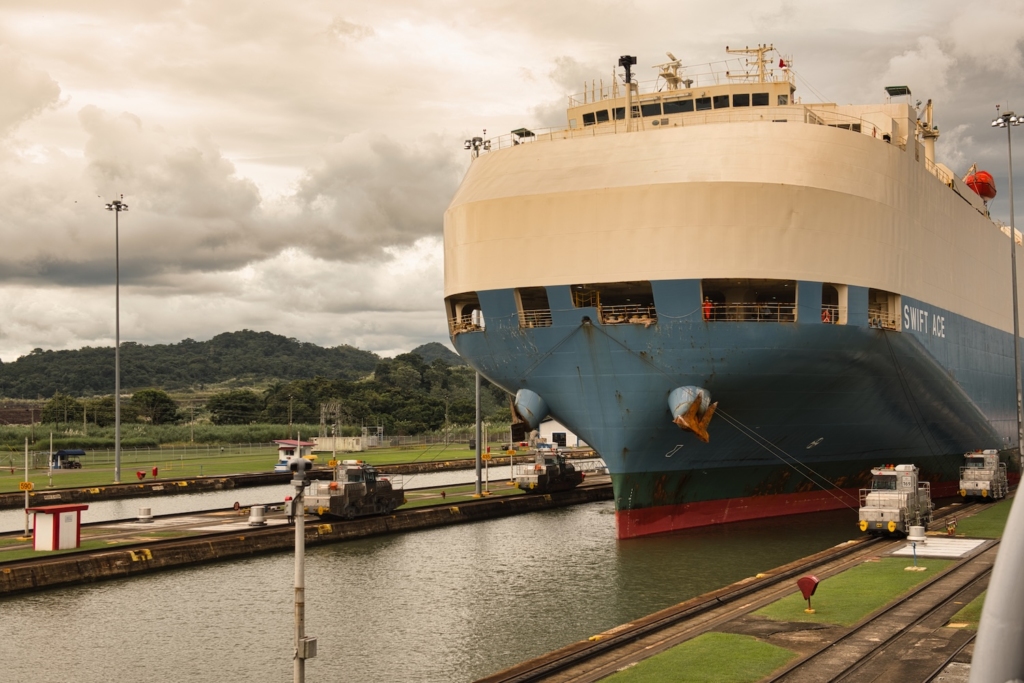
Miraflores Lock, Pacific Ocean
Panama Canal traffic, southbound
Casco Viejo with its mix of restored Spanish colonial buildings is a favorite neighborhood for most visitors to Panama City. This walkable part of town features a number of chic boutique hotels, trendy rooftop bars, restaurants, and the obligatory souvenir shops. The area is also home to the must-see museums in town: the Mona- and the Panama Canal Museum.The free Mona Museum introduces the indigenous Guna culture from the San Blas Islands and the meaning behind the artistic tapestries they create. The impressive Panama Canal Museum presents an excellent exhibit on the canal and its historical and political context.

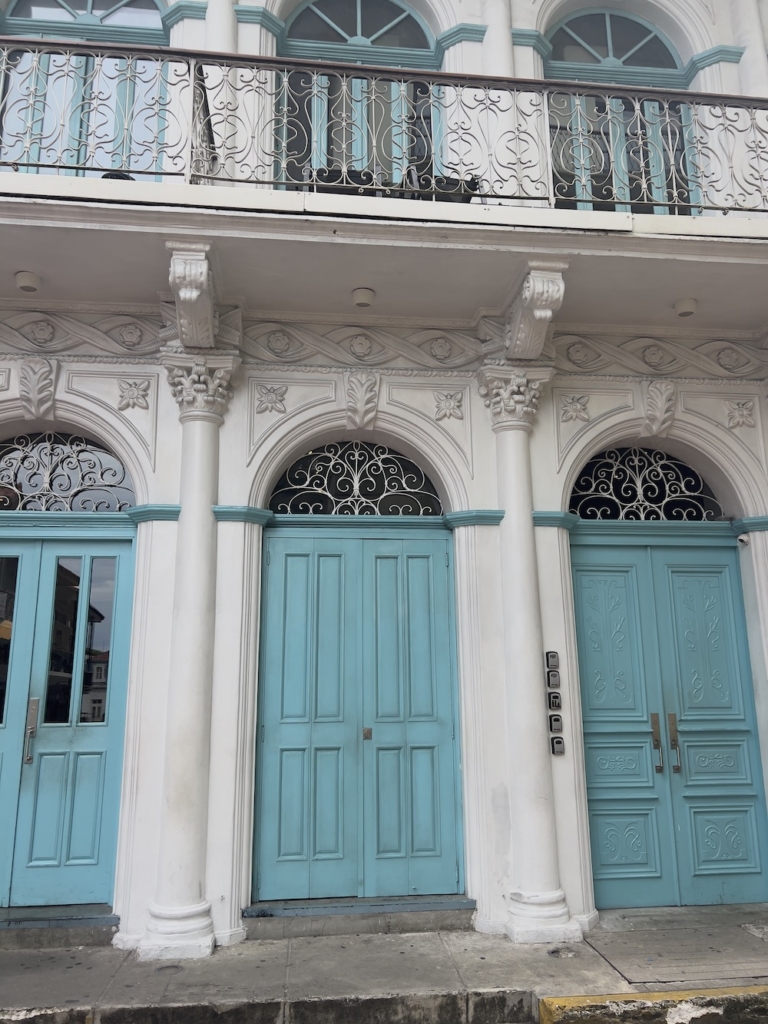
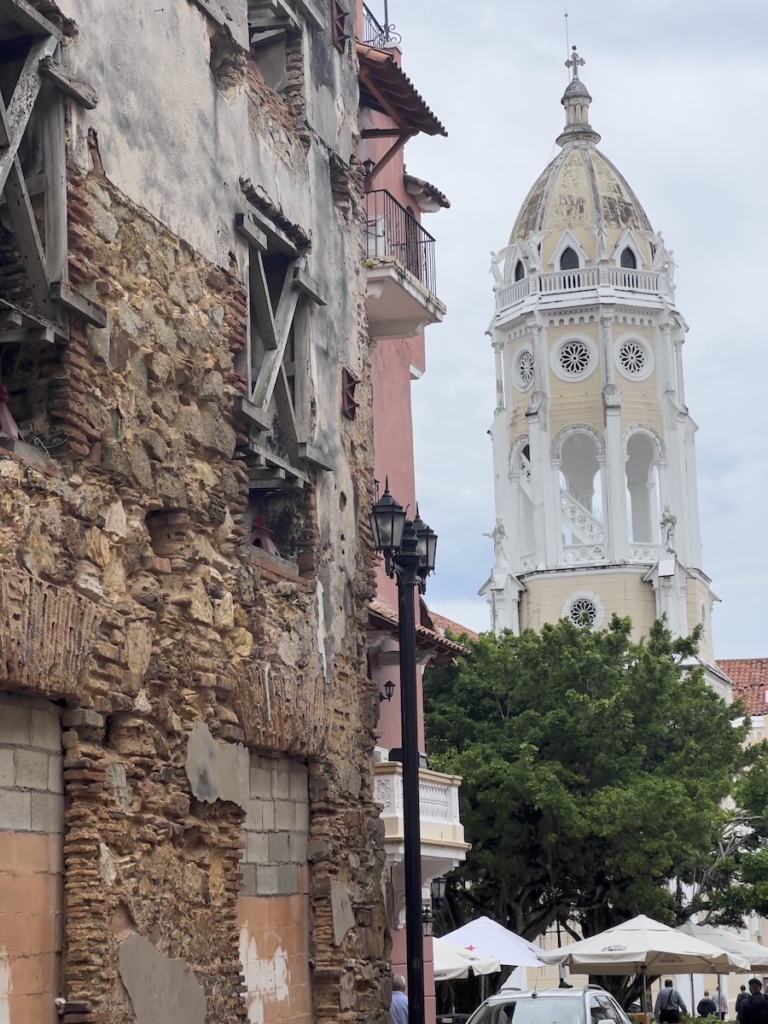
Casco Viejo, after the rain
Colours of Casco Viejo
Saint Francis of Assisi Church, Casco Viejo
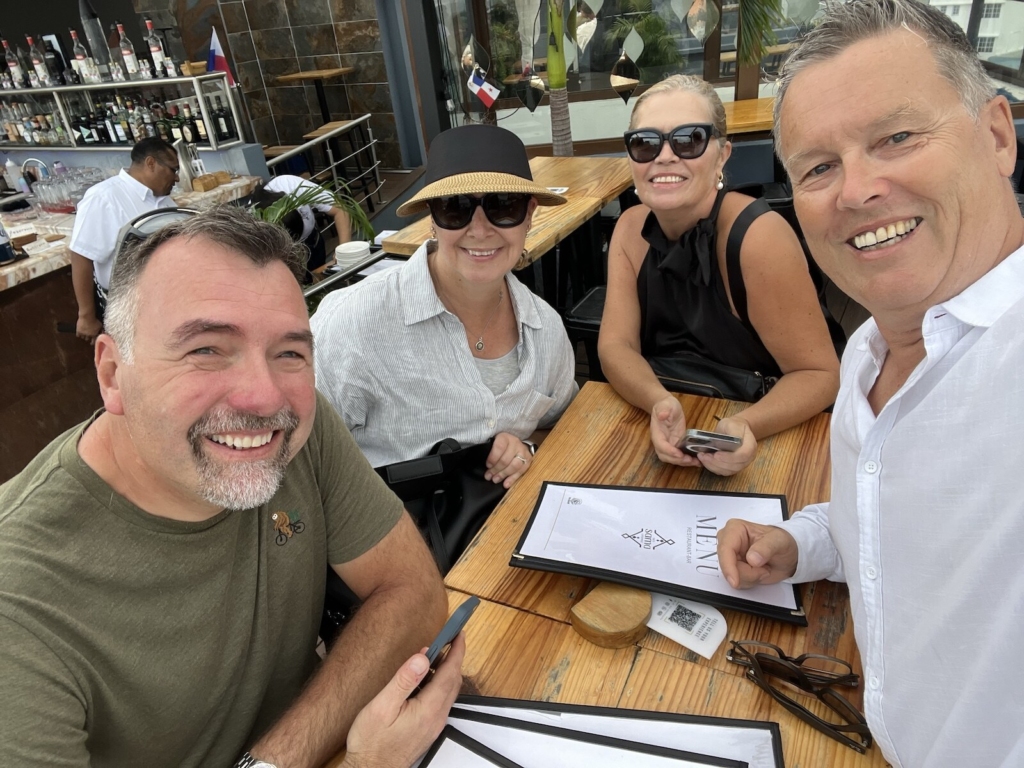

Sundowners at rooftop bar with good friends
Traditional Mola by Guna people
We worked the full tourism program: eating Ceviche at the Mercado de Marisco, taking the sub to Cinco de Mayo metro station and walking down Avenida Central, tasting Geisha Coffee, one of the most premium – and in my opinion completely overrated – and overpriced coffees, hiked Cero Ancon in the early morning hours, and explored Lake Gatun where we spotted local wildlife and monkeys.
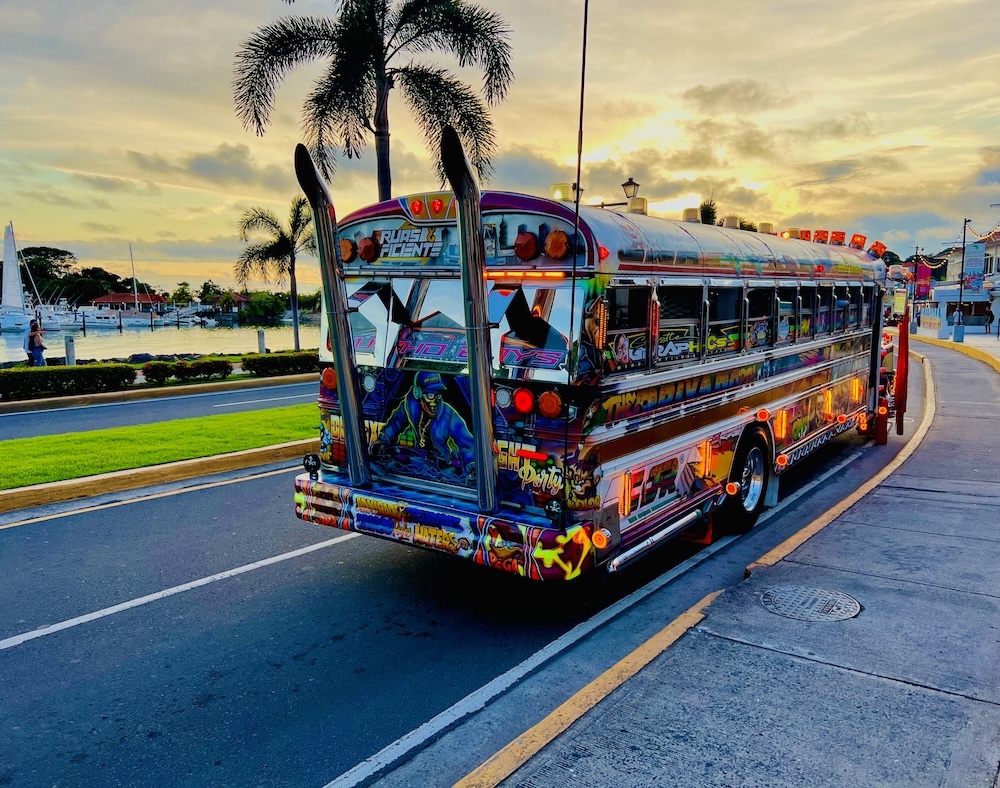

Transformed Diablo Rojo bus
Convenient public transportation
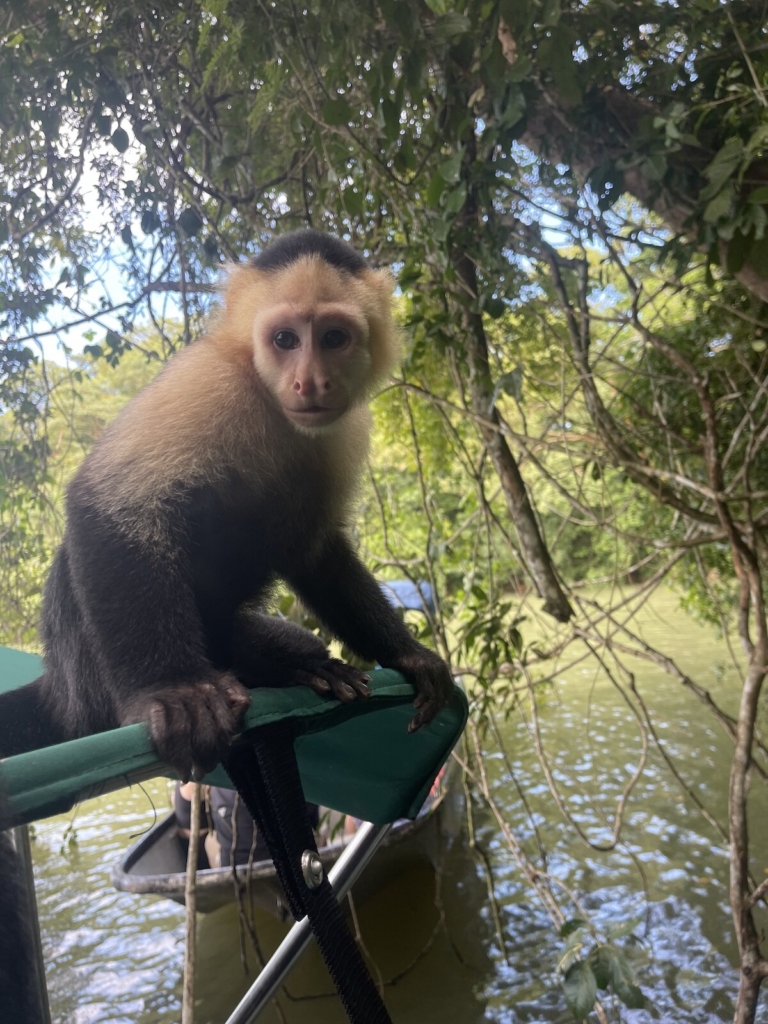
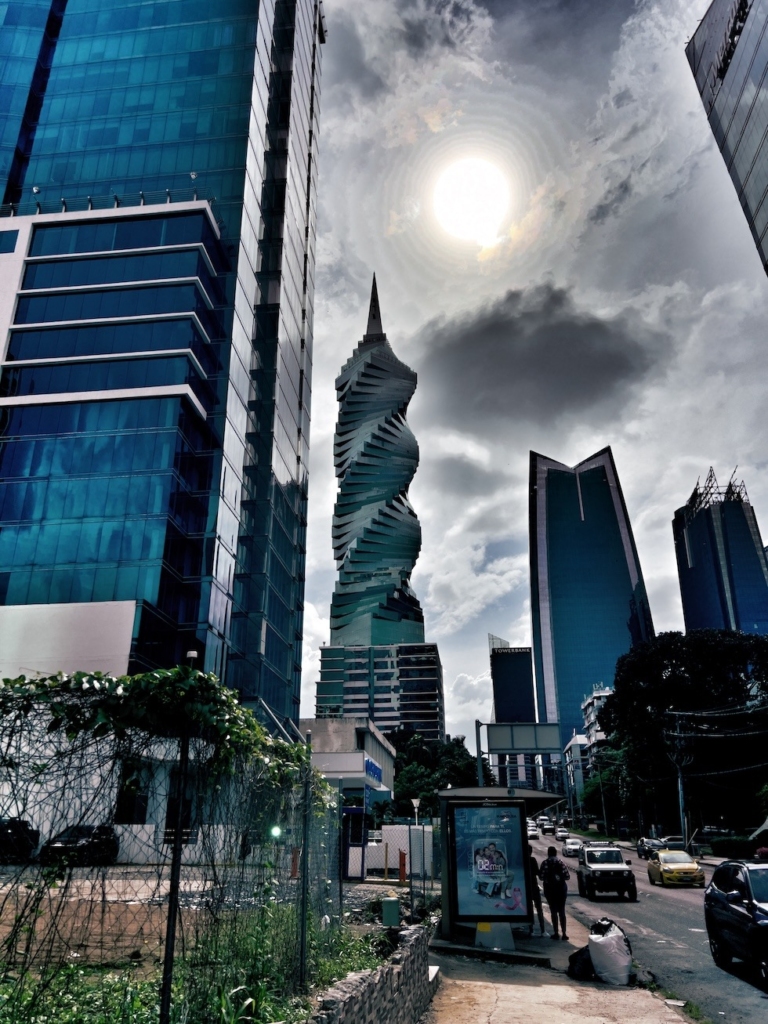
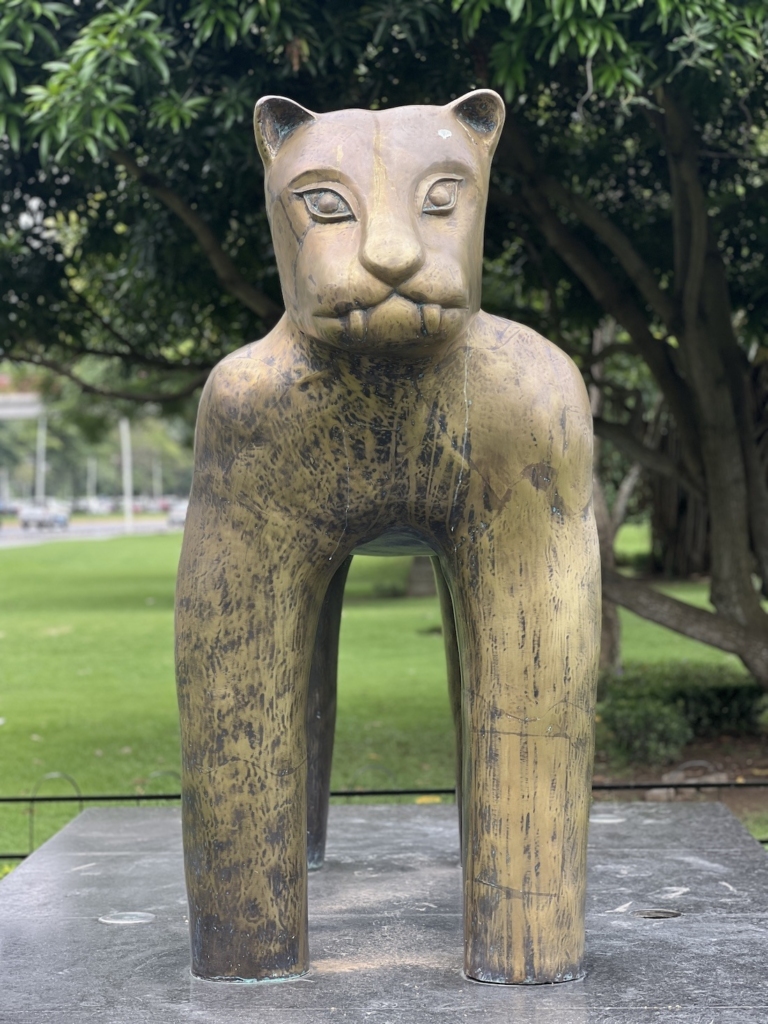
Cappuccino monkey, Gatun Lake
F&F Tower, nicknamed The Corkscrew
Art along Cinta Costerra
One of my favorite excursions was the visit to the Embera Drua village, deep in the Panamanian jungle along the Chagres River. One hour outside of Panama City we arrived at our landing point where we boarded a motorized dugout canoe for a ride up the river to the village and a nearby waterfall. I am always a bit hesitant visiting native villages, feeling like an intruder or spectator, not knowing how you are perceived by the locals. Sharing my thoughts with our excellent tour guide, Goran, he was kind enough to explain the following excerpt from the Embera people to me:
“In 1984, our family faced a new challenge to our traditional way of life. In this year, the area where we live, the Panama Canal watershed, became the Chagres National Park. Because of the new restrictions of living in a protected park, we had to look for new alternatives to our traditional activities of agriculture and hunting.
We started working in tourism in 1996. At first, we sought and received a lot of assistance from the Panama Tourism Bureau, the World Bank, and several local Non-Governmental Organizations. They helped us to get organized and build relationships with local tourism operators. They also provided us with important trainings in tourism, customer service, and visitor safety.
Today we have a very unique tourism program that is run by us and supports our community. The contrast of tourists interacting in such a traditional setting may seem puzzling at first, but the program has actually strengthened our community in many ways.
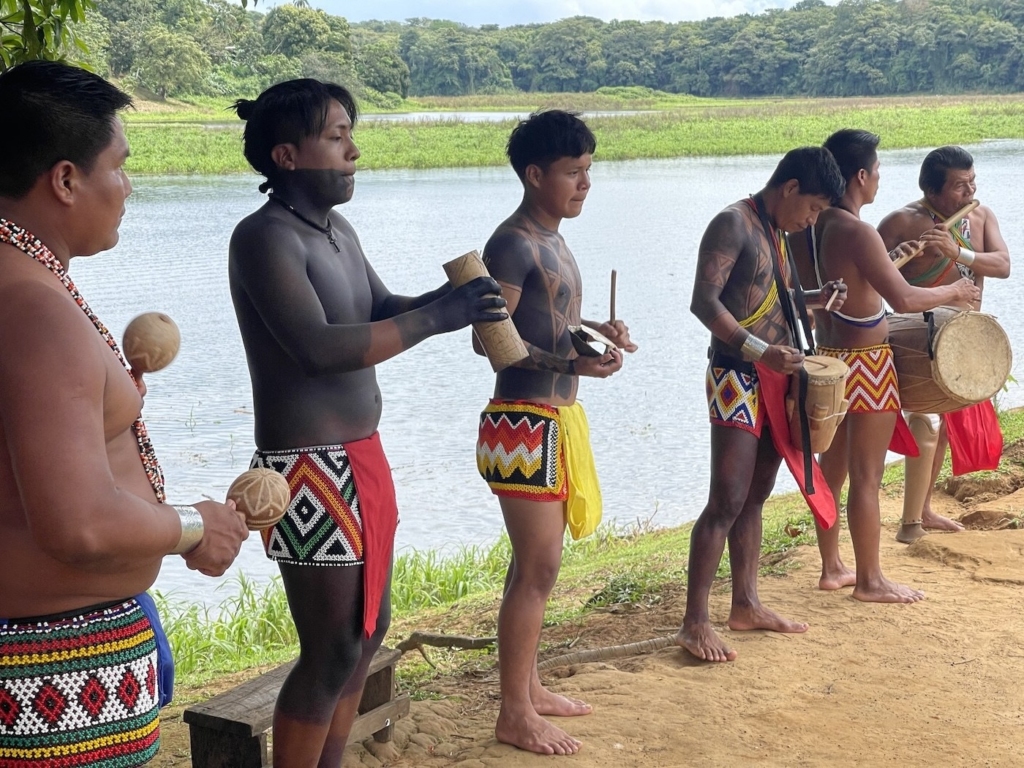
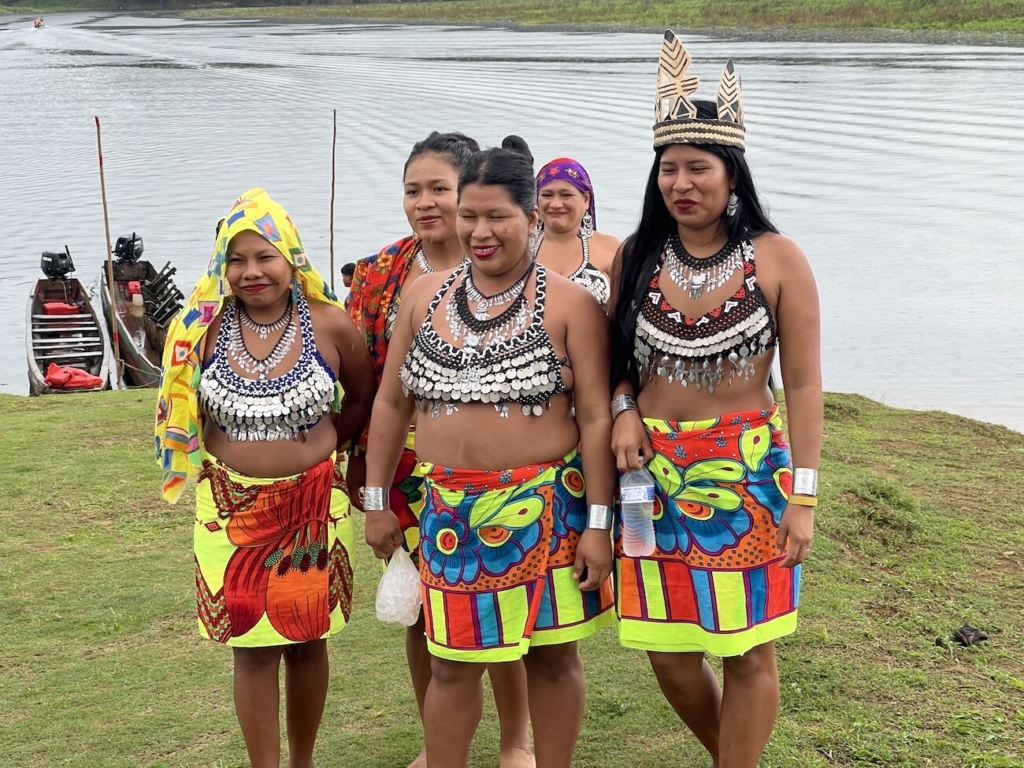
Welcome by Embera people
Traditional Embera outfit
Hearing this gave me a better understanding and a new perspective, and talking with these friendly people, made me realize that they are as interested in us as we are in them.
It has been three months since our arrival in Panama and I am still trying to gain a better understanding of Panama and Panamanians in particular. This melting pot of ethnicities, languages, religions, and cultures is visibly present and seems to function. There is so much to say about the amazing people we met; treating others with respect, being polite, music-loving, family-oriented, joyful.
It is however Panamanians’ more fluid perception of time I have a hard time accepting; showing up late seems to be normal and almost expected. Patience truly is a virtue!
While this leads to some frustration, there are those moments of kindness that make up for everything and put a smile – and in my case even a few tears on my face:
Sitting on the bus, deep into my thoughts, I recognized a man entering, and standing just a few steps away from my seat. The vehicle started to move, and he slowly, almost shy, began to talk in a quiet voice. He had tears in his eyes and I didn’t understand the majority of his monologue but he evidently talked about his family while he was trying to sell little caramels.
And while he continued his story, I watched tears running down the face of the woman sitting across the aisle from me with her little daughter. The girl cuddled up to her mom, trying to comfort her, while the mother whispered something into her ear and stroked her hair.
I am not sure what touched me more, the pure desperation mixed with the embarrassment of the man talking about his life and asking strangers for help, or the woman who was so moved by what she witnessed that she was unable to control her emotions.
Would this have been the same scenario in Germany, or Canada for that matter? Would we have automatically assumed that this was just a scam and asked him to leave us alone, or would we have shown the same compassion as the young mom?
I was so moved by this free gift of empathy that a young woman has shown her daughter, an important skill and tool for life that the little girl will acquire naturally.
The man left at the next station, his little basket filled with a few dollar notes. And while he walked by the girl, he gently tapped her shoulder, earning a big smile in return.
